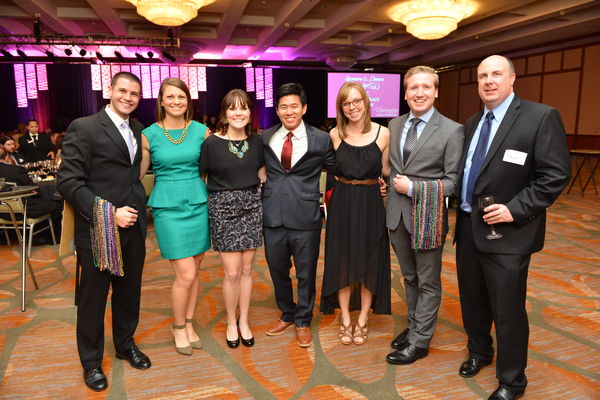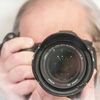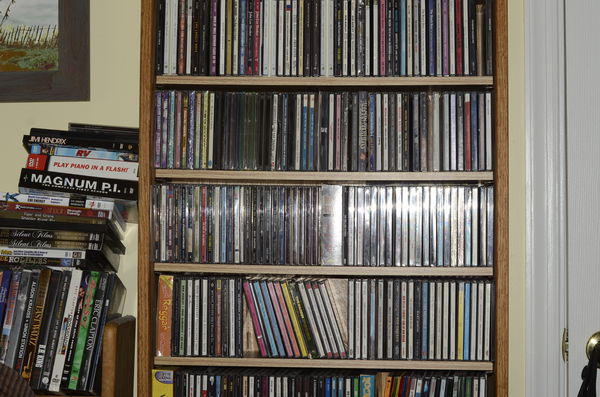Flash Photography
Mar 15, 2016 09:56:19 #
gvarner
Loc: Central Oregon Coast
tscali wrote:
I'm using a Nikon D750 and I'm using Manual Mode. ... (show quote)
For starters, my D7000 allows me to set a high shutter speed sync, clear up to the camer's max speed of 1/8000 if needed which is great for controlling ambient light to make a background go dark or control motion. I also use Manual mode, ISO 400, 1/200 sec indoors or 1/500 or faster outdoors, and the widest aperture for whatever lens I'm using. If it's a zoom with variable aperture, say 3.6 to 5.8, I'll use 5.8. After that, the f stop can be adjusted to increase DoF or the ISO can be increased for a little more range from the flash. All of this with the on-camera TTL flash or a TTL compatible off-camera flash.
Mar 15, 2016 10:28:38 #
Even in a darkened room, the flash lighting will add some light to the area while correctly exposing the main subject.
I disagree with the shutter speed suggested here if the main subject includes people. At shutter speeds below 100th sec, talking causes lips to blur. For this reason, I use a SS of 125 sec.
You have to gain experience with flash lighting by practice while learning from both your mistakes and your successes.
I disagree with the shutter speed suggested here if the main subject includes people. At shutter speeds below 100th sec, talking causes lips to blur. For this reason, I use a SS of 125 sec.
You have to gain experience with flash lighting by practice while learning from both your mistakes and your successes.
chaprick wrote:
OMG....you are getting all kinds of answers. Some... (show quote)
Mar 15, 2016 10:36:49 #
anotherview wrote:
Even in a darkened room, the flash lighting will add some light to the area while correctly exposing the main subject.
I disagree with the shutter speed suggested here if the main subject includes people. At shutter speeds below 100th sec, talking causes lips to blur. For this reason, I use a SS of 125 sec.
You have to gain experience with flash lighting by practice while learning from both your mistakes and your successes.
I disagree with the shutter speed suggested here if the main subject includes people. At shutter speeds below 100th sec, talking causes lips to blur. For this reason, I use a SS of 125 sec.
You have to gain experience with flash lighting by practice while learning from both your mistakes and your successes.
You can disagree if you like. The point is that the flash will provide the lighting that stops the action of the people. The ambient light will only be for lighting the things beyond what the flash will handle, such as walls and furniture (things that do not have moving lips). I have done enough weddings in dark reception halls to know for a fact that 1/60 with a flash will do the job. Sure 1/125 would be great, but then you are back to a black hole for sure.
Mar 15, 2016 10:51:52 #
chaprick wrote:
You can disagree if you like. The point is that the flash will provide the lighting that stops the action of the people. The ambient light will only be for lighting the things beyond what the flash will handle, such as walls and furniture (things that do not have moving lips). I have done enough weddings in dark reception halls to know for a fact that 1/60 with a flash will do the job. Sure 1/125 would be great, but then you are back to a black hole for sure.
:thumbup: I regularly shoot as low as 1/25th sec.
The flash stops freezes the motion, the long exposure keeps the photos from looking like it was shot in a cave.
ISO 1600, 1/25th sec @ f/4

Mar 15, 2016 10:59:18 #
I presume that the conditions dictate the settings for doing flash photography. For a beginner, such as the OP, a simple formula presented step-by-step can start him on the way to some comfort and confidence using flash lighting.
In my comment, I provided a formula that will work in a small to mid-sized room with a varied ambient light.
Further, here we have to consider the sense of helplessness that a beginner experiences when delving into what seems like the mysteries of flash photography. Let us keep it simple for such photographers.
As to blur of lips, it can happen even if the the flash lighting part in the exposure otherwise freezes the human subject, because the rest of the exposure if at a slow shutter speed (like 1/50 sec) can capture movement of the subject following the flash lighting part of the exposure.
I say I do not so much disagree as I express the results of my practical experience.
Finally, I suppose your kind of photography, because posed, will involve the subjects holding still while you press the shutter button. Under this condition, of course one could use a slower shutter speed.
In my comment, I provided a formula that will work in a small to mid-sized room with a varied ambient light.
Further, here we have to consider the sense of helplessness that a beginner experiences when delving into what seems like the mysteries of flash photography. Let us keep it simple for such photographers.
As to blur of lips, it can happen even if the the flash lighting part in the exposure otherwise freezes the human subject, because the rest of the exposure if at a slow shutter speed (like 1/50 sec) can capture movement of the subject following the flash lighting part of the exposure.
I say I do not so much disagree as I express the results of my practical experience.
Finally, I suppose your kind of photography, because posed, will involve the subjects holding still while you press the shutter button. Under this condition, of course one could use a slower shutter speed.
chaprick wrote:
You can disagree if you like. The point is that the flash will provide the lighting that stops the action of the people. The ambient light will only be for lighting the things beyond what the flash will handle, such as walls and furniture (things that do not have moving lips). I have done enough weddings in dark reception halls to know for a fact that 1/60 with a flash will do the job. Sure 1/125 would be great, but then you are back to a black hole for sure.
Mar 15, 2016 11:04:22 #
GoofyNewfie wrote:
:thumbup: I regularly shoot as low as 1/25th sec.
The flash stops freezes the motion, the long exposure keeps the photos from looking like it was shot in a cave.
The flash stops freezes the motion, the long exposure keeps the photos from looking like it was shot in a cave.
Great example of what I am saying. However, I do not handhold at 1/25. The ambient lights usually do blur some at that speed. If you use a tripod you can use just about any shutter speed down to half a second (as long as the main subject light source is a flash).
Mar 15, 2016 11:07:36 #
tscali wrote:
I'm using a Nikon D750 and I'm using Manual Mode. ... (show quote)
How far from your subject are you? Is the flash set at full power? What lens are you using, set to what f-stop? Perhaps you need a wider angle lens so you can shoot closer to the subject. Why don't you try setting your camera at shutter speed priority with a speed of 1/60th of a second, set your ISO to auto and set your flash to ETTL and see what kind of results you get? Start with your lens wide open and then stop it down step by step to see what your f-stop limitations are. That should tell you if you have have been setting the camera incorrectly in manual, or if your camera/flash combo just doesn't have the ability to get the shots the way you are trying to take them.
Mar 15, 2016 11:08:16 #
anotherview wrote:
I presume that the conditions dictate the settings... (show quote)
As I stated.....I am not posing people during a wedding reception. I have shot people dancing in a dark room at 1/50th with a flash. The flash freezes the motion.
Mar 15, 2016 12:16:13 #
Thanks all. Still a little confusing; but I got an idea of how to approach this challenge in the future.
Mar 15, 2016 12:38:02 #
when using flash there are several variables at play that can be altered to achieve the desired results.
power setting of the flash
distance from flash to subject (double distance = 1/4 of the light)
Power setting on the flash the lower the power 1/128 lowest and 1/1 highest
zoom on the flash focuses light to a wider or narrower beam
shutterspeed of camera (this controls the amount of ambient light allowed in slower = more)
Aperature - controls depth of field and also the amount of flash effecting the exposure larger aperature higher % of flash to ambient.
The easiest way is to set your aperture and shutter speed and iso using the guidelines above to bring in the amount of ambient light you want in the shot.. and use the flash/camera ttl to determine the proper exposure which you can then fine tune by changing any of the above parameters or using +/- flash compensation
Using a wider angle lens or zoom setting will also allow you to get closer.
If you are doing full manual (camera and flash), it will likely require some test shots to get the best exposure.
again you can move (the flash) closer or further, increase/decrease the power setting, adjust the zoom on the flash and then fine tune with shutter speed longer brings in more ambient and aperture alters the overall amount of light to the sensor. Hope this helps...
power setting of the flash
distance from flash to subject (double distance = 1/4 of the light)
Power setting on the flash the lower the power 1/128 lowest and 1/1 highest
zoom on the flash focuses light to a wider or narrower beam
shutterspeed of camera (this controls the amount of ambient light allowed in slower = more)
Aperature - controls depth of field and also the amount of flash effecting the exposure larger aperature higher % of flash to ambient.
The easiest way is to set your aperture and shutter speed and iso using the guidelines above to bring in the amount of ambient light you want in the shot.. and use the flash/camera ttl to determine the proper exposure which you can then fine tune by changing any of the above parameters or using +/- flash compensation
Using a wider angle lens or zoom setting will also allow you to get closer.
If you are doing full manual (camera and flash), it will likely require some test shots to get the best exposure.
again you can move (the flash) closer or further, increase/decrease the power setting, adjust the zoom on the flash and then fine tune with shutter speed longer brings in more ambient and aperture alters the overall amount of light to the sensor. Hope this helps...
Mar 15, 2016 12:40:03 #
CaptainC wrote:
Here is how I do it. It works. br br Camera to Ma... (show quote)
Concise and right on the mark. :thumbup: :thumbup: :thumbup:
Mar 15, 2016 13:51:49 #
tscali wrote:
I'm using a Nikon D750 and I'm using Manual Mode. ... (show quote)
In a pinch, if I need to diffuse the flash, and adjusting the power doesn't help enough, I have taken a Kleenex folded it and put it over the flash head. I held the Kleenex in place with a rubber band, hair tie, or paperclip. It you still need more double it over again or add another Kleenex. I don't normally use this approach, but it has worked as a last resort.
Mar 15, 2016 19:24:59 #
The attached shot was taken with a Nikon D7000 in near darkness (a few minutes ago, after 7PM with no lights in the room, daylight only) with the onboard flash. There was just enough light to focus. The camera was set to manual, iso-100, 1/250 sec. The lens was set to f8. The shutter speed needs to be set before the flash is popped up. The distance to the subject is about 8 ft with a 50mm prime lens. On the D7000 menu, the flash control is set to manual, the flash sync speed is set to 1/250 and the flash shutter speed is set to 1/60.
Mar 15, 2016 21:09:05 #
Bobspez wrote:
The attached shot was taken with a Nikon D7000 in ... (show quote)
You could use just about any shutter setting and get the same results.
The flash is providing 100% of the light in this photo and is not affected by the shutter.
(Impressive CD collection, btw)
Mar 15, 2016 21:26:37 #
Note that if you stood slightly to one side, and then angled the lens toward this subject, likely the exposure would improve due to the angle of incidence. The flash lighting would bounce off at an angle instead of straight back at the lens.
Bobspez wrote:
The attached shot was taken with a Nikon D7000 in ... (show quote)
If you want to reply, then register here. Registration is free and your account is created instantly, so you can post right away.







